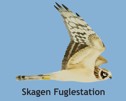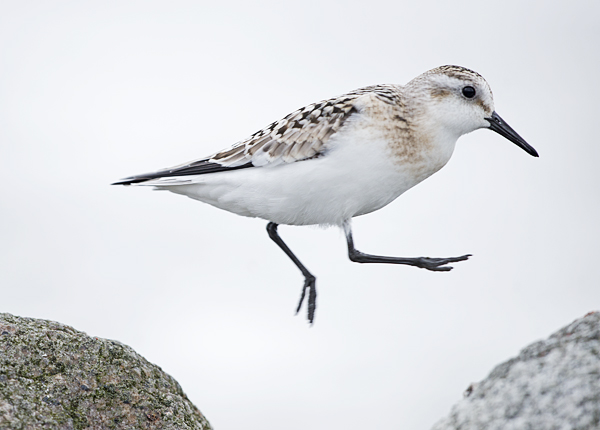
|
|
2015 - All time low for migrating passerines Lista Bird Observatory has been monitoring passerines using standardized catching with the aid of mist-nets for 25 years. We are now halfway through the autumn season, which for the ringing station is from 15th July to 15th November. As the majority of insectivorous passerines have now left Norway, we can make a preliminary conclusion. The conclusion is easy to draw: the first part of autumn 2015 has been the poorest since the observatory started in 1990 for warblers and other long-distance migrating passerines at Lista B.O. The situation is expected to be the same for species that migrate shorter distances later in the autumn as well. Lista Bird Observatory has been monitoring passerines using standardized catching with the aid of mist-nets for 25 years. We are now halfway through the autumn season, which for the ringing station is from 15th July to 15th November. As the majority of insectivorous passerines have now left Norway, we can make a preliminary conclusion. The conclusion is easy to draw: the first part of autumn 2015 has been the poorest since the observatory started in 1990 for warblers and other long-distance migrating passerines at Lista B.O. The situation is expected to be the same for species that migrate shorter distances later in the autumn as well. By Jan Erik Røer The lowest numbers for many species The low numbers of birds in the nets, is applicable to most of the species included in the table below . Whinchat, Garden Warbler, Blackcap, Willow Warbler (Picture at top of page) and Spotted Flycatcher show so far the poorest season since we started the standardized ringing (in 1990). Regarding these species, more than 95% of our breeding birds normally migrate before 15th September. In addition, both Tree Pipit and Starling numbers are very close to the lowest numbers we have observed previously. On the other hand, there are some other species, such as Dunnock, Robin and Chaffinch, where preliminary results, albeit early in the migration season for these, indicate that we have to date recorded lower numbers than ever before. The Autumn netting campaign is dominated by juveniles Normally there is a large predominance of juveniles among the caught birds in the autumn at the bird observatory. Adult birds (1 year and older) migrate for most species more directly and probably more so over Lista during autumn migration. Therefore, the autumn figures from the bird observatory mainly reflects the number of juveniles in the station's recruiting area for the breeding season. The catch data can explain how successful the breeding season has been. With generally low catch figures this year, it seems that most passerine bird species have had a very poor breeding season, with few chicks that have survived until the autumn migration.
The table shows 21 species, which normally are caught in the nets with numbers exceeding 25 individuals until 15th of September, under the standardized ringing programmme at Lista Bird Observatory. First column of figures shows the annual catch numbers, while the next column shows the average for the period 1990-2014. The last column shows the catch percentage compared to the average in the same time period. A cold and wet spring, together with a lot of snow in the mountains, resulted in poor breeding success. The main reason for the poor breeding season seems to be quite obvious: A cool spring and an early summer, combined with relatively much rain. These weather conditions meant that parents could not find enough food, leading to high nestling mortality and very low breeding success. After a mild April in large parts of Scandinavia, the temperature in May and June dropped far below normal. The result was that insect larvae (especially butterfly caterpillars) did not evolve, or their cycles were delayed. In addition to this problem, the parents had extra energy demands in warming up eggs and chicks during low temperatures and frequent rain. The weather made foraging difficult, which did not allow many passerines to find enough food. Many people reported during in the social media in late June that they had found their nest-boxes full of dead nestlings. These reports came from all over southern and central Norway, but also from Sweden. The clutches were mainly from Blue Tit and Great Tit. The situation was probably better with Pied Flycatcher which breed a little later than the tits. The results from Lista now suggest that the poor breeding season affected many more species than just tits. 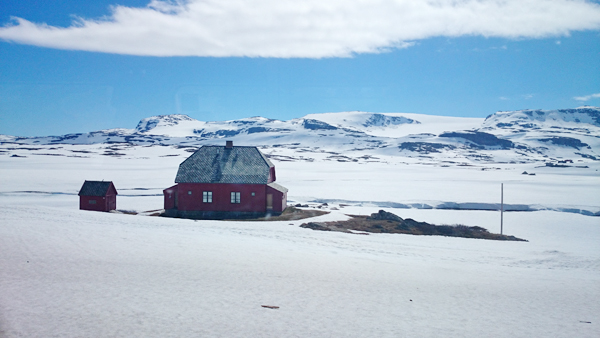 From Finse 1st July 2015. Not many places to nest here. Finse is 1222 meters above sea level, but it was significant with snow very late, also at lower altitude than this. Photo Jan Erik Røer. From Finse 1st July 2015. Not many places to nest here. Finse is 1222 meters above sea level, but it was significant with snow very late, also at lower altitude than this. Photo Jan Erik Røer.While in the low altitude rain and cold temperatures made it difficult to nest, in the mountains and especially west of the watershed, the snow in many areas hardly melted before breeding season was over. As an example the ground was completely covered with snow at Finse as late as 1st July. It was not only difficult for Willow Warblers and Meadow Pipits to nest in many places here, but rather it was quite simply impossible. In addition, rodent populations collapsed in southern Norway during the winter 2014/2015. This normally results in several predators turning from rodents to instead feed on eggs and nestlings. The few chicks that were able to leave the nest, probably experienced a greater predation pressure. Poor mist-netting conditions, but few birds in the nets anyway. During recent years, late summers and early autumns at Lista have been windier than normal. These are difficult mist-netting conditions meaning sometimes that fewer nets can be opened and thereby resulting in less birds caught in the nets. However, when the conditions have been good, the number of bird in the nets has also been low. We have experienced several windless days almost without any birds on migration or in the nets. Our results from Lista are also not very different from other reports this autumn. Jomfruland Bird Observatory states in its’ August report that they only ringed 236 Willow Warblers in their standard programme compared to the normal average of 874. while a number other species were also caught in lower numbers than normal. Falsterbo Fågelstation in Southern Sweden had as of 14th September, trapped 1834 birds compared to the normal average of 2,981 birds. At Falsterbo Willow Warblers were caught in numbers only had half the normal average, and European Robins just a third of the normal average. There are however species that occurred in more normal numbers at Falsterbo. Low numbers of birds ringed were also reported from Ottenby on Öland, although we do not at present have more details from there. 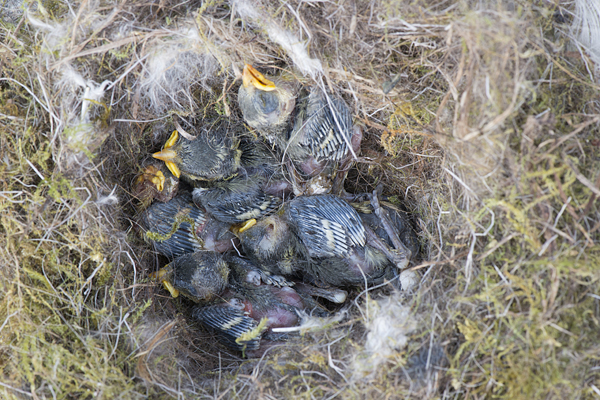
Dead clutch of Blue Tits from Nesodden, Akershus County on 5th June 2015. From six clutches in this area only 4 fledglings were produced. Normally there would have been around 50 to 60. The same situation was reported from many other areas. Photo: Jan Erik Røer Probably not any better for short-distance migrants | ||||||||||||||||||||||||||||||||||||||||||||||||||||||||||||||||||||||||||||||||||||||||||||||||||||||||||||||||||
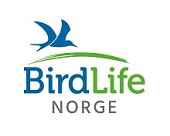
| Ringing numbers | ||||||||||||
|
| Reportasje fra Lista FS i Aftenposten |

|
| Seasonal deviation | ||||||||||||||||||||||||||||||
|
|
Følg Følg Lista FS på facebook.com |
| Siste 5 på siden |
|
Begynnerkurs i ringmerking: 17.-18. august The annual report for 2023 is available! Fuglefestival 2.-3. september Report from spring 2023 Ny rapport: Måling av elektromagnetiske feltstyrke fra fugleradar ved Lista fyr. |
| Nyheter fra NOF |
|
Lille måltrost og den enda... Fine hekkeflåter til ternene... Statsforvalteren sier nei til... Hotell i særklasse Tusenvis av svarttrost: Hvor... Kulturlandskapsarten... BirdLife Norge reagerer på... Hva vet vi om svartand i... |
Lista Fuglestasjon
Fyrveien 6
NO-4563 Borhaug
post@listafuglestasjon.no Tlf: 949 86 793
 |  |


 Only in English
Only in English

